 W
WThe Reconquista was a period in the history of the Iberian Peninsula of about 781 years between the Umayyad conquest of Hispania in 711, the expansion of the Christian kingdoms throughout Hispania, and the fall of the Nasrid kingdom of Granada in 1492.
 W
WGuilhem Ademar was a troubadour from the Gévaudan in France. He travelled between the courts of Albi, Toulouse, Narbonne, and Spain. He achieved fame enough during his life to be satirised by the nobleman and monk, Monge de Montaudon. Guilhem entered holy orders towards the end of his life. Sixteen poems—fourteen cansos, a sirventes, and a partimen with Eble d'Ussel—form his surviving corpus. His cansos are his most famous pieces. Usually humorous, several mock the poetry of Ademar's more illustrious contemporary Arnaut Daniel. One canso survives with a tune.
 W
WAwake iron! was a battle cry of the Middle Ages employed by the Almogavars. It was shouted on entering the fight, to frighten the enemy and invoke the presence of iron in the battle.
 W
WCalatrava la Vieja is a medieval site and original nucleus of the Order of Calatrava. It is now part of the Archaeological Parks of the Community of Castile-La Mancha. Situated at Carrión de Calatrava, Calatrava during the High Middle Ages was the only important city in the Guadiana River valley. It thus guarded the roads to Cordova and Toledo.
 W
WThe term Catholic Monarchs refers to Queen Isabella I of Castile and King Ferdinand II of Aragon, whose marriage and joint rule marked the de facto unification of Spain. They were both from the House of Trastámara and were second cousins, being both descended from John I of Castile; on marriage they were given a papal dispensation to deal with consanguinity by Sixtus IV. They married on October 19, 1469, in the city of Valladolid; Isabella was eighteen years old and Ferdinand a year younger. It is generally accepted by most scholars that the unification of Spain can essentially be traced back to the marriage of Ferdinand and Isabella.
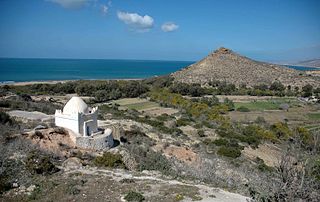 W
WCazaza was a Spanish enclave on the western coast of Cape Three Forks, in what is today Morocco, around 18 km from Melilla. It was here that the exiled Boabdil, last Emir of Granada, landed when he left the Iberian Peninsula in 1492.
 W
WThe Conquest of the island of Majorca on behalf of the Christian kingdoms was carried out by King James I of Aragon between 1229 and 1231. The pact to carry out the invasion, concluded between James I and the ecclesiastical and secular leaders, was ratified in Tarragona on August 28, 1229. It was open and promised conditions of parity for all who wished to participate.
 W
WThe County of Coimbra was a political entity consisting of the lands of Coimbra, Viseu, Lamego and Santa Maria da Feira, in modern Portugal. It arose within the Kingdom of Asturias following the reconquest of the region, when the lands were granted to Hermenegildo Gutiérrez, who over the next four decades was largely responsible for the resettlement of the depopulated province. He and his immediate successors were counts, and held Coimbra, but were not explicitly counts of Coimbra, although they are sometimes referred to as such retrospectively. The first nobleman specifically to be called count of Coimbra was Gonzalo Muñoz, who was probably a scion of the family of Hermenegildo. Becoming count around 959, he was one of the most powerful noblemen in the western part of the kingdom until he rose in rebellion against King Bermudo II of León and was probably killed during the region's subjugation. The degree to which his successors were alienated from their monarch can be seen when, following the region's recapture in 987 by the Moors of Al-Mansur, Gonzalo's sons joined that general in his sack of Santiago de Compostela in 997.
 W
WThe County of Portugal refers to two successive medieval counties in the region around Braga and Porto, today corresponding to littoral northern Portugal, within which the identity of the Portuguese people formed. The first county existed from the mid-ninth to the mid-eleventh centuries as a vassalage of the Kingdom of Asturias and later the Kingdoms of Galicia and León, before being abolished as a result of rebellion. A larger entity under the same name was then reestablished in the late 11th century and subsequently elevated by its count in the mid-12th century into an independent Kingdom of Portugal.
 W
WCovadonga is one of 11 parishes in Cangas de Onís, a municipality within the province and autonomous community of Asturias, in Northwestern Spain. It is situated in the Picos de Europa mountains. With a permanent population of 58 (2008), it consists essentially of the "Real Sitio de Covadonga"/"Real Sitiu de Cuadonga" also known as the "cradle of Spain", a pilgrimage site dedicated to Our Lady of Covadonga/Cuadonga and commemorating the Battle of Covadonga of 718/722.
 W
WThe European enclaves in North Africa were towns, fortifications and trading posts on the Mediterranean and Atlantic coasts of western North Africa, obtained by various European powers in the period before they had the military capacity to occupy the interior. The earliest of these were established in the 11th century CE by the Italian Maritime republics; Spain and Portugal were the main European powers involved; both France and, briefly, England also had a presence. Most of these enclaves had been evacuated by the late 18th century, and today only the Spanish possessions of Ceuta, Melilla, and the Plazas de soberanía remain.
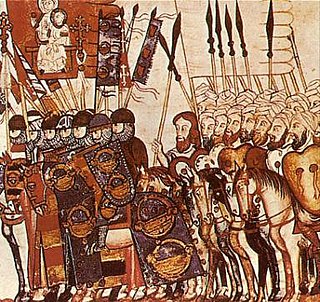 W
WFarfanes is the name given to a class of soldiers hailing mostly from the Christian Iberian kingdoms in the later Middle Ages fighting as mercenaries for the various Muslim dynasties of the Western Mediterranean. Farfanes fought following the European fashion, in dense formations of heavily armed men either on horseback or on foot under the command of a Christian European officer, the qadi. The phenomenon came to an end when the Christian mercenaries were repatriated in the 15th century. The patronym Farfán is still relatively common in 21st-century Spanish-speaking countries and may be linked to these families which came back from the Maghreb.
 W
WThe Granada War was a series of military campaigns between 1482 and 1491, during the reign of the Catholic Monarchs Isabella I of Castile and Ferdinand II of Aragon, against the Nasrid dynasty's Emirate of Granada. It ended with the defeat of Granada and its annexation by Castile, ending all Islamic rule on the Iberian peninsula.
 W
WThe Military Order of Christ was founded in 1318. The order, in all essence of the word, were 'Knights Templar' whom continued their operations from their headquarters in Tomar, Santarém Portugal. Contrary to the belief that the Templar Order was renamed and established by King Denis of Portugal, the Templars merely moved backed to their original headquarters in Tomar Castle which was an autonomous zone granted to the Templar Order. Reasons for this move and change of name were to protect the vast assets of the order from repatriation by the Catholic Church. The Templar assets were then transferred over to the Cavaleiros de Cristo. All with the blessing of King Diniz who helped pull off the deal with the Church.
 W
WJusticia mayor was a title bestowed upon a person in 19th century Spanish Empire which authorized him to perform law enforcement and judicial functions within a town, city of region. It is similar to the position of sheriff in some jurisdictions.
 W
WThe Kingdom of Asturias was a kingdom in the Iberian Peninsula founded by the Visigothic nobleman Pelagius. It was the first Christian political entity established after the Umayyad conquest of Visigothic Hispania in 718 or 722. That year, Pelagius defeated an Umayyad army at the Battle of Covadonga, in what is usually regarded as the beginning of the Reconquista.
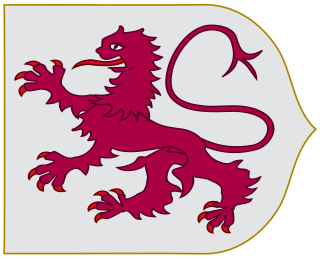 W
WThe Kingdom of León was an independent kingdom situated in the northwest region of the Iberian Peninsula. It was founded in AD 910 when the Christian princes of Asturias along the northern coast of the peninsula shifted their capital from Oviedo to the city of León. The kings of León fought civil wars, wars against neighbouring kingdoms, and campaigns to repel invasions by both the Moors and the Vikings, all in order to protect their kingdom's changing fortunes.
 W
WThe Llibre dels fets, originally spelled Libre dels feyts, is the autobiographical chronicle of the reign of James I of Aragon (1213–1276). It is written in Old Catalan in the first person and is the first chronologically of the four works classified as The Four Great Catalan Chronicles, all belonging to the early medieval Crown of Aragon, and its first royal dynasty, the House of Barcelona. James I inherited as a child the titles of King of Aragon, Count of Barcelona, and Lord of Montpellier, but also became by conquest King of Majorca and King of Valencia. James emphasises in his chronicles his conquest of Majorca (1229) and of Valencia (1238).
 W
WMoros y Cristianos or Moros i Cristians literally in English Moors and Christians, is a set of festival activities which are celebrated in many towns and cities of Spain, mainly in the southern Valencian Community. According to popular tradition the festivals commemorate the battles, combats and fights between Moors and Christians during the period known as Reconquista. There are also festivals of Moros y Cristianos in Spanish America.
 W
WThe kingdom of Portugal was established from the county of Portugal in the 1130s, ruled by the Portuguese House of Burgundy. During most of the 12th and 13th centuries, its history is chiefly that of the gradual reconquest of territory from the various Muslim principalities (taifas) of the period.
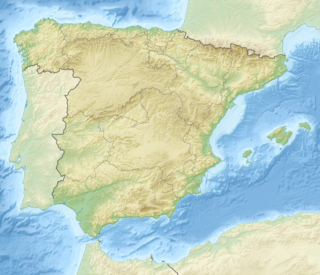 W
WPuerto del Suspiro del Moro or Pass of the Moor's Sigh is a mountain pass in the Spanish Sierra Nevada.
 W
WThe Repoblación was the ninth-century repopulating of a large region between the River Duero and the Cantabrian Mountains, which had been depopulated in the early years of the Reconquista.
 W
WThe designation arte de (la) repoblación was first proposed by José Camón Aznar in 1949 to replace the term Mozarabic as applied to certain works of architecture from the Christian kingdoms of northern Spain between the end of the 9th and beginning of the 11th centuries. Camón argued that these buildings were related stylistically to the architecture of Asturias and owed little to Andalusian styles. Moreover, since they were built by Christians living under Christian rule, neither were they Mozarabic.
 W
WSaint James the Moor-slayer is the name given to the representation of the apostle James, son of Zebedee, as a legendary, miraculous figure who appeared at the also legendary Battle of Clavijo, helping the Christians conquer the Muslim Moors.
 W
WThe Shepherds' Crusade of 1320 was a popular crusading movement in northern France. Initially aiming to help the Reconquista of Iberia, it failed to gain support from the church or nobility and instead murdered hundreds of Jews in France and Aragon.
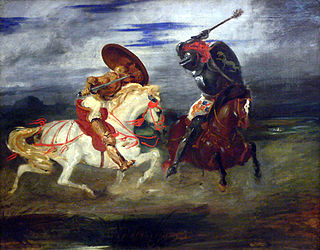 W
WDuring the Middle Ages, Medieval Europe was engaged in constant warfare. European warfare during the Middle Ages was marked by a transformation in the character of warfare from antiquity, changing military tactics, and the role of cavalry and artillery. In addition to military, tactical and technological innovations during this period, chivalric military and religious ideals arose, giving motivation for engagement in the ceaseless warfare. In the Iberian Peninsula, chivalric ideals and institutions would be adopted and exercised with more fervour than anywhere else.
 W
WThe Taifa of Murcia was an Arab taifa of medieval Al-Andalus, in what is now southern Spain. It became independent as a taifa centered on the Moorish city of Murcia after the fall of the Umayyad Caliphate of Córdoba. Moorish Taifa of Murcia included Albacete and part of Almería as well.
 W
WThe Kingdom of Toledo was a realm in the central Iberian Peninsula, created after the capture of Toledo by Alfonso VI of León in 1085. It continued in existence until 1833; its region is currently within Spain.